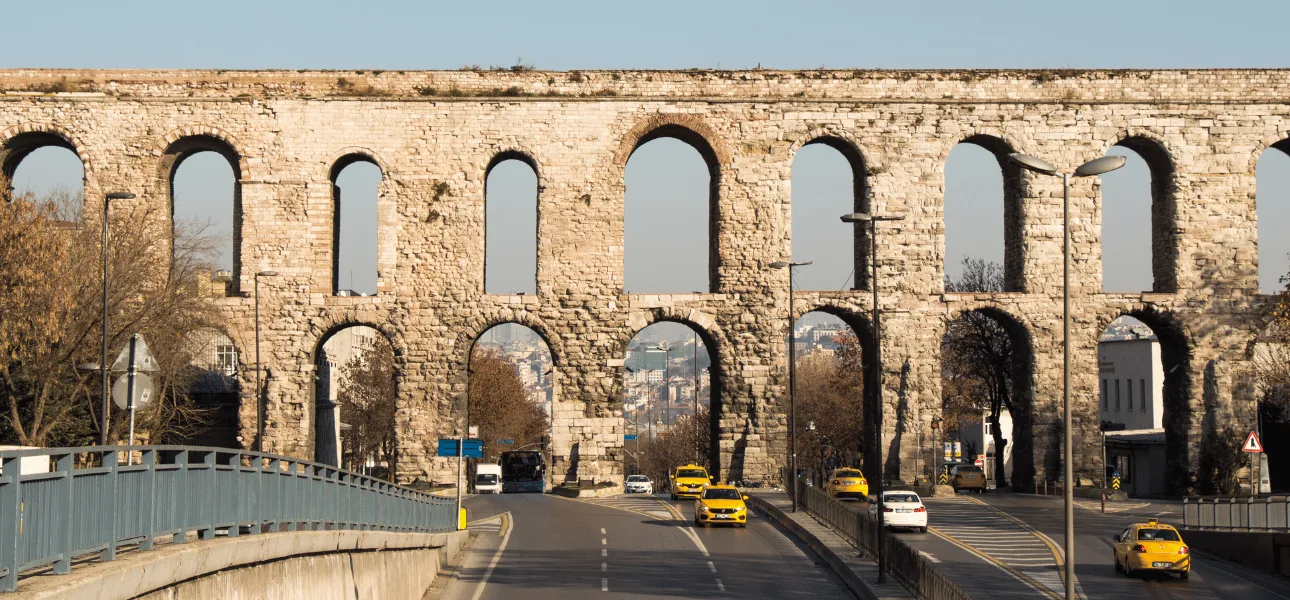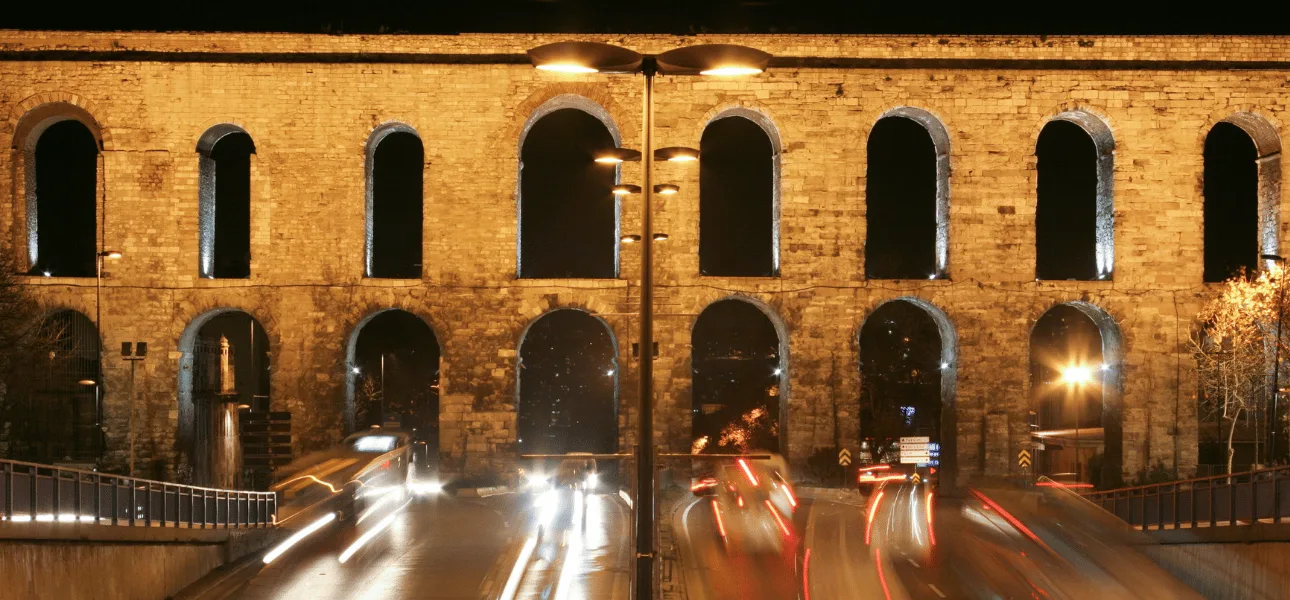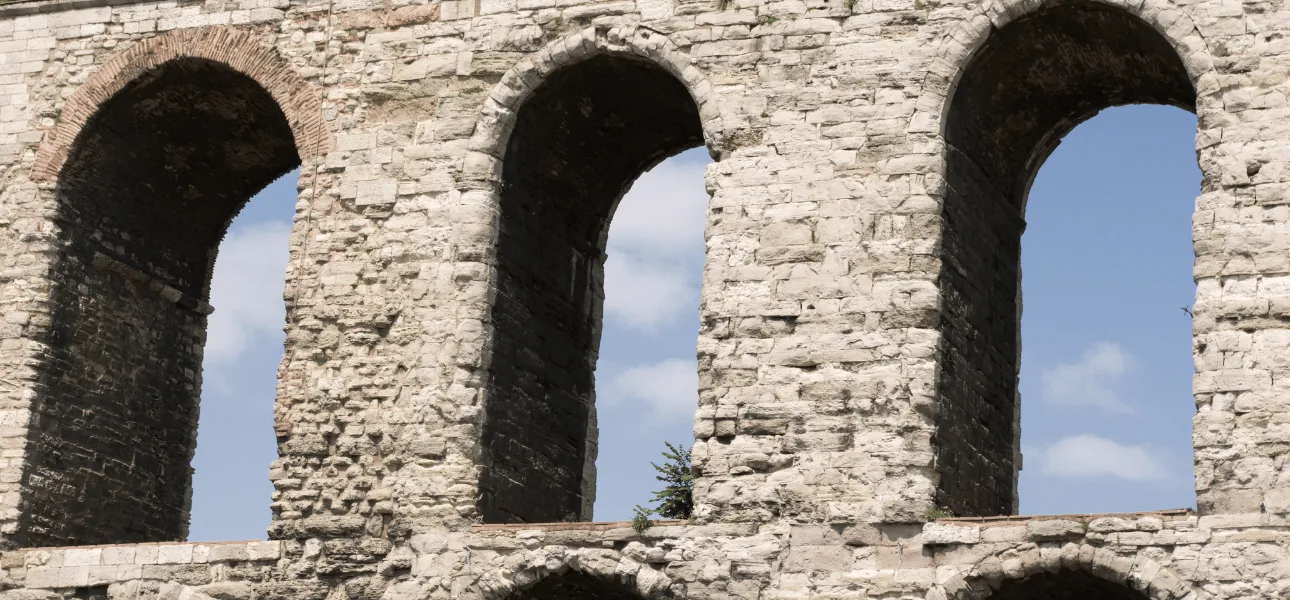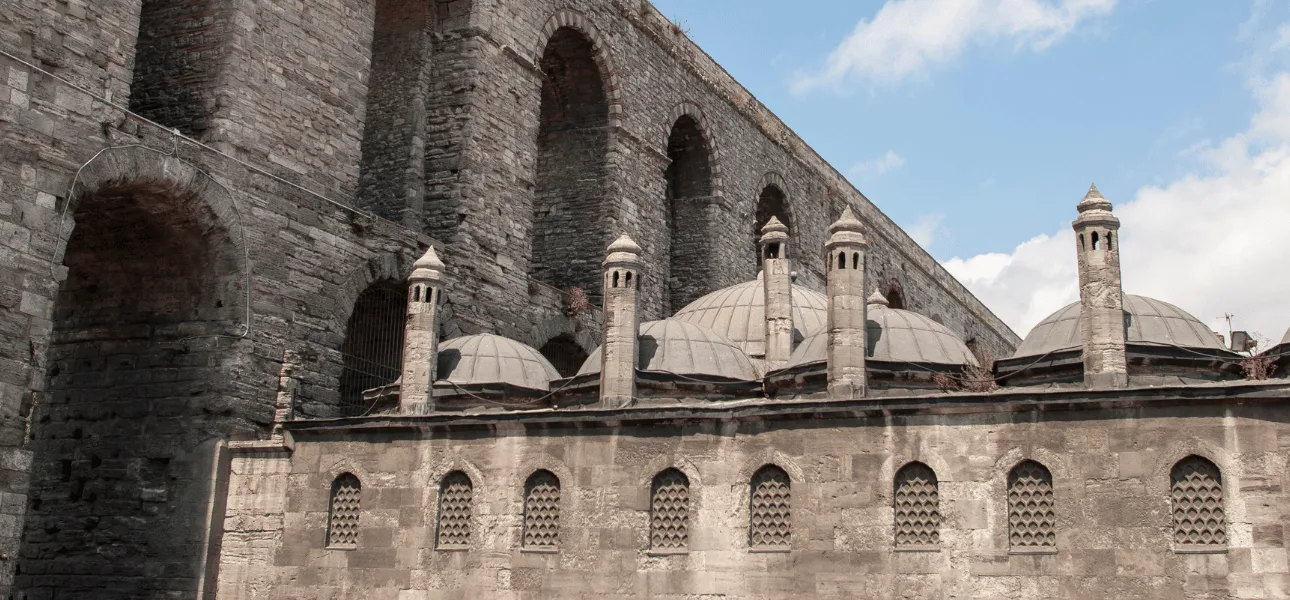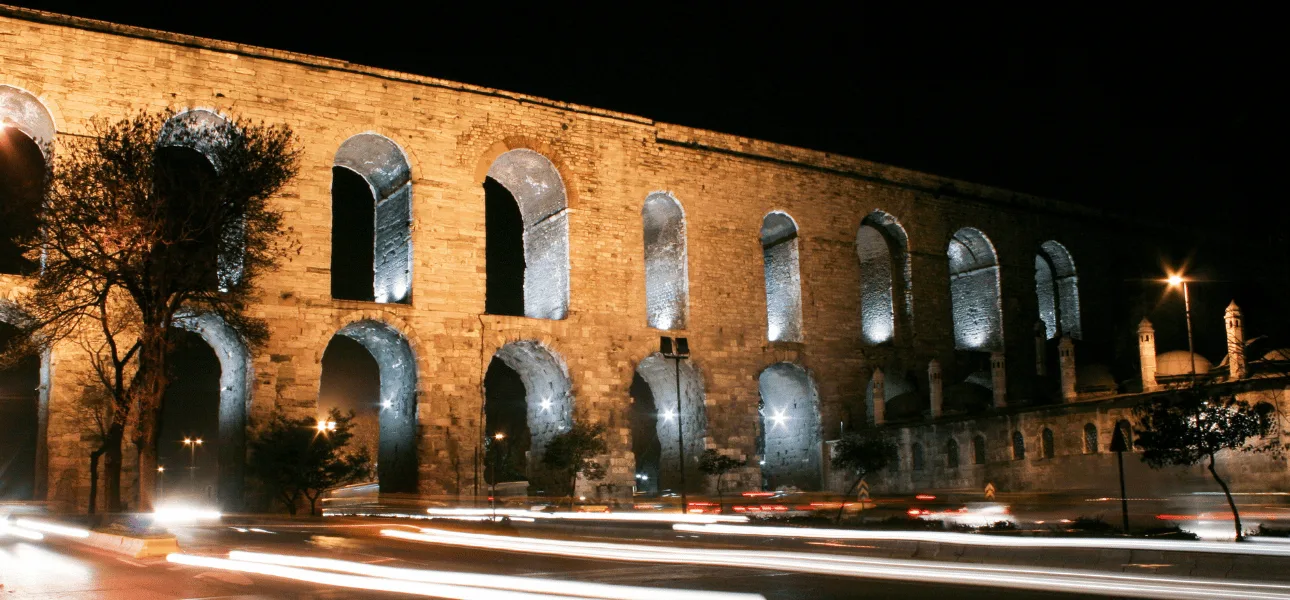Bozdogan Aqueduct
From
Duration
Max People
Min Age
Genel Bakış
Istanbul, a city that has hosted numerous civilizations throughout history, is home to countless landmarks bearing traces of its rich past. One such landmark is the Bozdogan Aqueduct, located in the Fatih district of Istanbul. Constructed during the reign of Roman Emperor Valens, this aqueduct served as a vital water supply system for both Byzantine Constantinople and Ottoman Istanbul. Today, it stands as a significant symbol of Istanbul's historical and cultural heritage. In this article, we will explore the history, architectural features, function, and visitor information about the Bozdogan Aqueduct.
History of the Bozdogan Aqueduct
The Bozdogan Aqueduct, also known by its Latin name “Aqueduct of Valens,” was constructed during the reign of Roman Emperor Valens (r. 364-378 AD). Completed in the late 4th century, the aqueduct was built to address the growing water needs of Constantinople, the city now known as Istanbul. At the time, the rapidly expanding city required a sophisticated water supply network. The Bozdogan Aqueduct exemplifies the advanced engineering and architectural techniques of the Roman Empire.
Byzantine Era
During the Byzantine period, the Bozdogan Aqueduct was a primary component of Constantinople’s water distribution system. It carried water from the Belgrad Forest to the city, supplying residents and the imperial palace. Together with other aqueducts and cisterns, the aqueduct played a crucial role in maintaining the city's water supply and showcased the engineering prowess of the Byzantine Empire.
Ottoman Era
After the Ottoman conquest of Constantinople, the Bozdogan Aqueduct continued to serve as a vital part of the city’s water infrastructure. During the reign of Sultan Mehmed II (Fatih Sultan Mehmet), the aqueduct underwent restoration to adapt it to the needs of the Ottoman capital. Subsequent rulers, including Suleiman the Magnificent and Sultan Mustafa III, also carried out repairs and maintenance to ensure its continued functionality. During this time, the aqueduct supplied water to mosques, complexes, fountains, and baths across the city.
Modern Era
Today, the Bozdogan Aqueduct no longer serves its original purpose but remains a preserved historical monument. As a significant part of Istanbul’s skyline, it attracts visitors and locals alike. Its historical and cultural value continues to make it one of Istanbul’s most iconic landmarks.
Architectural Features of the Bozdogan Aqueduct
The Bozdogan Aqueduct is a masterpiece of Roman engineering. Originally spanning approximately 971 meters, 921 meters of the structure still remain intact today. It is situated between the Istanbul University campus and the Fatih Mosque and passes over Atatürk Boulevard. The aqueduct’s height varies but averages around 28 meters.
Constructed using precisely cut stones, the aqueduct features a two-tiered design. The upper tier contains the water channels, while the arches and columns below provide structural support. The best-preserved section near the Fatih Mosque showcases the aqueduct’s intricate masonry and design, reflecting the architectural sophistication of its time.
Purpose of the Bozdogan Aqueduct
The primary purpose of the Bozdogan Aqueduct was to transport water to Constantinople, later Istanbul. Water from the Belgrad Forest was channeled through the aqueduct to supply the city’s cisterns, fountains, and baths. Notable structures like Hagia Sophia and the Topkapi Palace also benefitted from the aqueduct’s water supply. During the Ottoman era, it continued to support the city's water distribution needs, particularly for religious and public buildings.
The Significance of the Bozdogan Aqueduct Today
The Bozdogan Aqueduct is an essential part of Istanbul’s historical fabric. Serving as a functional infrastructure during the Roman, Byzantine, and Ottoman periods, it now stands as a symbol of the city’s rich history. For those interested in Istanbul’s past, it is a must-see landmark. Additionally, the aqueduct’s picturesque appearance makes it a favorite spot for photographers. The silhouette of the aqueduct at sunset provides an especially stunning view.
Visiting the Bozdogan Aqueduct
Visiting the Bozdogan Aqueduct is convenient due to its central location in Istanbul’s Fatih district. Located above Atatürk Boulevard, the aqueduct is surrounded by historical landmarks, cafes, and restaurants. Nearby attractions such as the Fatih Mosque and the Süleymaniye Mosque can be included in your itinerary, making the visit a culturally enriching experience.
How to Get There
The Bozdogan Aqueduct is easily accessible by public transportation. The nearest tram stop is Laleli-University, from which the aqueduct is within walking distance. Buses, metro lines, and minibusses also serve the area, making it a straightforward destination to reach. For those traveling by car, parking options are available nearby.
Things to Do Around the Bozdogan Aqueduct
While visiting the Bozdogan Aqueduct, there are plenty of activities to enjoy in the surrounding area. The Fatih district is rich in historical and cultural sites. Nearby landmarks such as the Fatih Mosque, Süleymaniye Mosque, and the Grand Bazaar offer visitors a glimpse into Istanbul’s vibrant history.
Additionally, Atatürk Boulevard features various cafes and restaurants where visitors can relax and enjoy Turkish cuisine. These spots provide the perfect opportunity to unwind after exploring the area’s historical treasures.
Conclusion
The Bozdogan Aqueduct is a testament to the civilizations that have shaped Istanbul over centuries. Built during the Roman era and serving through the Byzantine and Ottoman periods, this structure was a vital part of the city’s water supply system. Today, it stands as a preserved monument reflecting Istanbul’s historical and cultural richness. If you are planning to visit Istanbul, be sure to explore the Bozdogan Aqueduct and experience the timeless charm of this architectural marvel.

